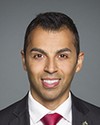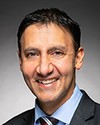Thank you for being here, Ms. Schweitzer. It's great to see you again. I prefer calling you Toni, but I want to be a bit more formal.
I want to say at the outset that the work you do at the Parkdale legal clinic is obviously well received and well respected. My understanding is that it was the first legal clinic in Toronto, if not in Ontario. For all of the work you're doing, I commend you and the clinic.
I want to ask you about two things that you raised, one right at the outset and one secondarily.
Your work in the Tibetan community is invaluable, and I thank you for it.
I'll ask both questions at once, because time is always short.
Perhaps you could touch on what you called “D-2s”, the concurrently processed individuals who are coming in under a refugee stream as protected persons. You indicated that it was meant to be concurrent to make it occur faster, and this has not actually been borne out by the facts.
Could you tell us a bit about how long it's actually taking, particularly for your Tibetan clients, as opposed to, if you have some comparison, how long it's taking for others who are generally in the family sponsorship category, and what you would suggest as a solution to rectify it? Is it to eliminate concurrent processing altogether and shift everything into family processing, or is it to enhance what is meant to be a quicker system currently?
I'll put the second question out there now. You talked about the visa posts abroad and the fact that they give you a grocery list of all of the things you require, showing what could be done incrementally or in stages. You might not need the medical up front; you could wait for it until after you've determined the marriage.
I presume you deal mostly with South Asian visa processing centres, but do you have any basis to inform the committee as to whether there are any visa offices that you know of, even anecdotally, anywhere in the world doing exactly what you say, and whether that's working better? I'd be curious to know about that.




